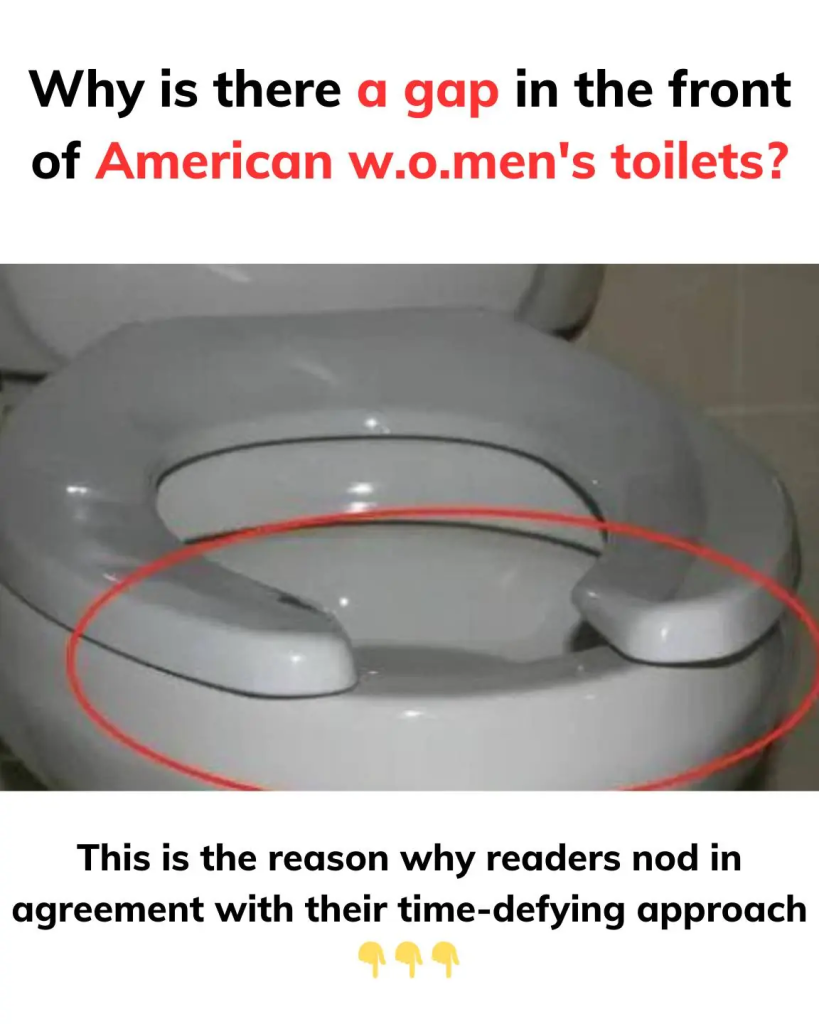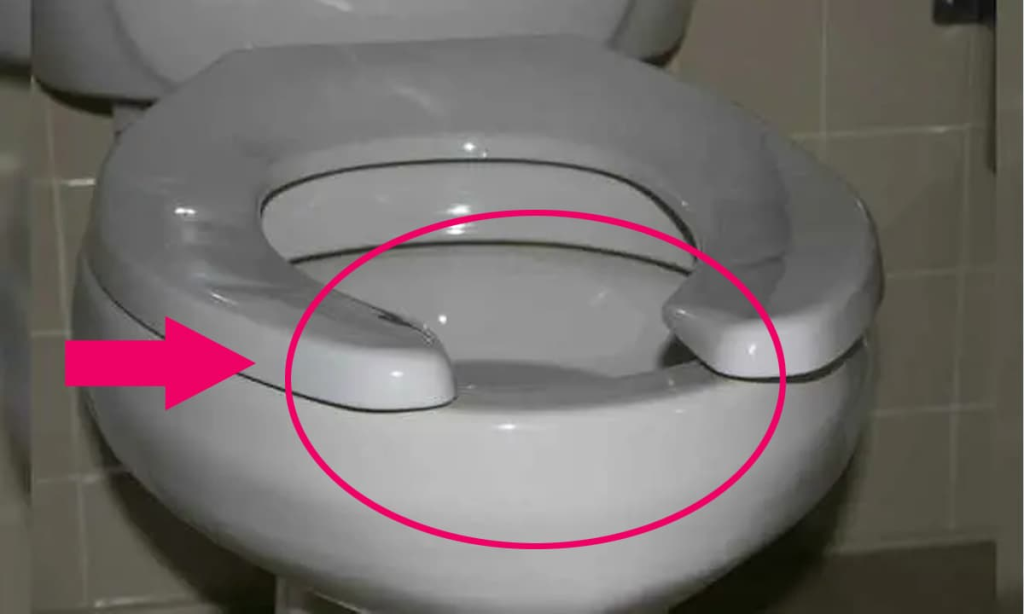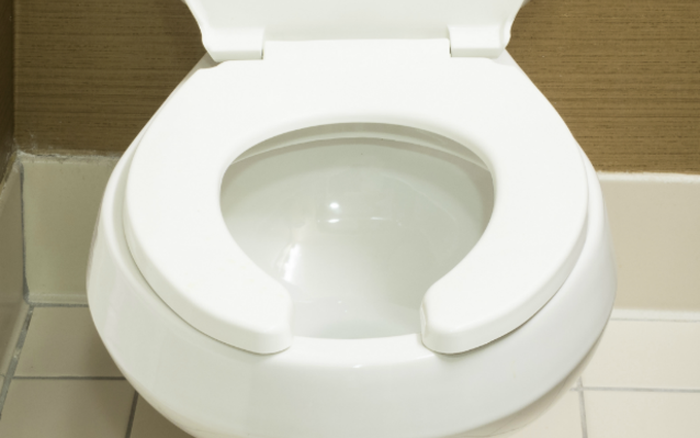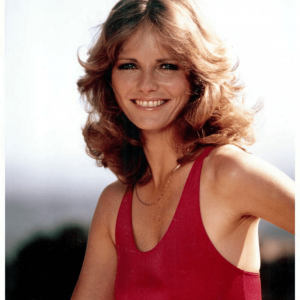If you’ve ever visited a public restroom in the U.S., you’ve likely noticed it—the mysterious U-shaped seat or open-front toilet seat in women’s bathrooms (and men’s too). At first glance, it may seem like a design flaw or a manufacturing shortcut, but there’s actually a fascinating, functional reason behind it.
Let’s break down the story of why there’s a gap in the front of American women’s toilet seats, how it became standard, and what it really means for hygiene, accessibility, and practicality.

The Open-Front Toilet Seat: More Than Just a Design Quirk
The toilet seat with a missing front section isn’t just random—it’s intentional. Known officially as the “open-front seat”, this style has been a requirement in public restrooms across the United States for decades. It’s such a common sight that most people don’t give it a second thought, but once you notice it, you start to wonder: why?
Here’s the short answer—it’s all about hygiene, convenience, and inclusivity. And the story goes deeper than you might think.
Video: Explains why public toilets use U-shaped toilet seats.
It Started With the Plumbing Codes
The open-front toilet seat became a standard fixture after the American Standard National Plumbing Code made it mandatory back in the 1950s. Later, it was adopted by other code authorities like the Uniform Plumbing Code, which governs how public restrooms are designed and operated in many U.S. states.
This wasn’t a matter of aesthetics—it was a calculated decision to improve cleanliness in shared spaces. And for women especially, the design serves a practical purpose.
Why the Gap in the Front Makes Sense for Women
Let’s get real for a second. The design of the U-shaped seat helps avoid contact with sensitive skin when using the toilet—especially for women who may sit farther forward on the seat for hygiene or biological reasons. The cut-out reduces the risk of urine backsplash and limits skin-to-seat contact, which is crucial in public restrooms where cleanliness isn’t always guaranteed.
The design is also intended to eliminate the need for women to lift the seat to avoid contact during certain moments—less touching, less contamination, less discomfort.
Improved Hygiene for Everyone

While often associated with women’s restrooms, the open-front seat benefits everyone. For both men and women, the design minimizes accidental contact with the seat during wiping or when leaning forward.
This gap also allows for easier cleaning and maintenance, especially in busy facilities like airports, stadiums, malls, and office buildings where restrooms need to be turned over quickly between users.
It’s one of those designs that quietly improves hygiene without being obvious—kind of like the unsung hero of public sanitation.
Accessibility and the ADA Connection
Another key factor? Accessibility.
The open-front toilet seat design helps people with limited mobility. It offers more room at the front of the toilet, making it easier to clean oneself without excessive bending or movement. This makes a huge difference for elderly users, people with disabilities, and those who use assistive devices.
It’s no coincidence that this design aligns well with ADA (Americans with Disabilities Act) recommendations, reinforcing the idea that smart design is inclusive design.
Not Common Everywhere: Why It’s Mostly American

You might be wondering, “Why do I only see this in the U.S.?”
That’s because the open-front seat is primarily a North American standard. In many European, Asian, and Middle Eastern countries, toilet designs differ—often featuring closed seats, squat toilets, or bidet-style options. Cultural norms, plumbing codes, and hygiene habits all influence how restrooms are built around the world.
So, if you’re traveling abroad and notice that the seats are fully closed in the front, don’t be alarmed—it’s just a different way of approaching bathroom design.
The Debate: Open vs. Closed Toilet Seats
Of course, not everyone loves the U-shaped seat. Some people argue that the gap is unnecessary, or that it can cause cold spots or discomfort. Others prefer the visual uniformity of a full-circle seat.
However, in public facilities where ease of use, sanitation, and maintenance are top priorities, the open-front seat still wins out. It does its job without demanding attention—exactly what you want in a restroom feature.
Pop Culture, Memes, and Curiosity

Interestingly, this seemingly small design choice has made its way into pop culture, memes, and Reddit threads. It’s one of those everyday mysteries people casually notice but never fully explore.
And now that you know the backstory, you’ll probably never unsee it. It’s one of those “a-ha” moments that makes you appreciate how even the tiniest design can make a big impact.
Conclusion: A Small Gap With a Big Purpose
The open-front toilet seat might not look like much, but it’s a prime example of form meeting function. What seems like a strange or incomplete design is actually a thoughtful solution to a very real problem—maintaining hygiene, ensuring comfort, and making restrooms more inclusive and accessible.
So next time you’re in a public restroom and notice the gap in the front of the toilet seat, give a silent nod to decades of smart engineering and public health insight. Because when it comes to the little things that make a big difference, this humble design choice truly stands out


